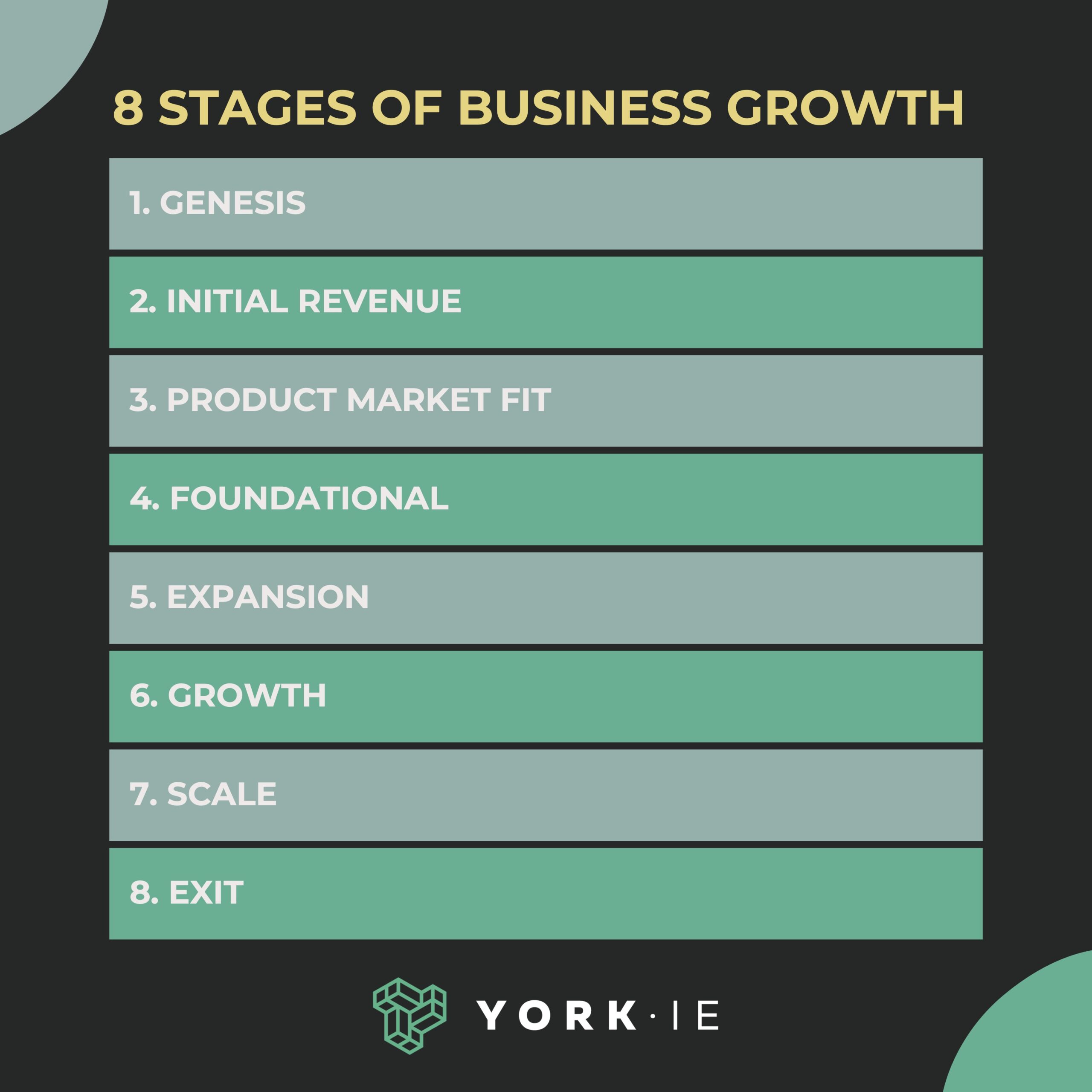The stages of business growth are often talked about relative to funding rounds.
“I’m a Seed-stage founder.” “We’re a Series A company.”
But even if you’re a bootstrapped startup that never raises funding, I can still qualify you as a Series B company vs. a Pre-Seed company, for example, based on certain criteria and milestones.
What Are the 8 Stages of Business Growth?
The eight stages of business growth are:
- Genesis
- Initial Revenue
- Product Market Fit
- Foundational
- Expansion
- Growth
- Scale
- Exit
If you’ve got a great business that is profitable and sustainable, you may not raise as much money as other companies at the same stage, and you may not even need to raise outside capital at all. (The best funding, after all, is customer funding.) You may also start to rely more on bank debt, lines of credit and other forms of financing that don’t require you to sell more pieces of your company.
We’re still going to pattern-map your company at revenue scale or customer scale to others that follow the traditional fundraising-focused company growth stages, however.
Let’s take a look at these company growth stages and how they track with venture capital funding rounds:
1. Genesis
At this earliest of the business growth stages, you have an idea, maybe a pitch deck or business plan, and not much else — certainly not a fully developed product or any revenue.
2. Initial Revenue
This is the equivalent of the Pre-Seed stage. Companies here typically have a minimum viable product (MVP) that’s in use with some beta customers or product design partners, but they have not yet found product market fit.
Their revenue can range from zero up to the low tens of thousands of dollars — basically, enough to support continued work on their MVP, but not much more.
3. Product Market Fit
This maps to the Seed stage on the traditional funding journey. These companies are close to achieving product market fit, or they at least have some initial proof points, having identified their ideal customer profile (ICP).
They should be bringing in between $500,000 and $1 million in revenue from paying customers, some of whom are willing to act as reference customers.
4. Foundational
Companies at this stage have a real business and are ready to raise a Series A round. They absolutely have product market fit, have nailed their ICP and have hardened their business and product foundation, and their revenue may range from $1 million to $4 million.
With foundational revenue from a foundational customer base, it’s time to put fuel on the fire for growth with a larger capital infusion.
5. Expansion
Companies often reach the expansion stage after raising a Series A round. Maybe they’re not ready to raise $20 million, but they still have an opportunity to accelerate their growth by targeting new markets, launching new features or expanding into existing accounts.
These companies have typically cleared $5 million.
6. Growth
The growth stage is the equivalent of a Series B. After years of steady growth, now is the time to really go for it. How can you take that $10 million in revenue to $20 million or $30 million?
This is when true stars shine and the potential of your startup is realized.
7. Scale
People use the words “growth” and “scale” interchangeably, but I view them as separate stages of business growth. The best way I can describe it is, growth is your journey and scale is your destination.
Once you’ve achieved the goals you laid out in the growth stage, you’ve become a scale-out company. Once you’re here, it may require an entirely evolved or different leadership team with layers of management and processes that weren’t in place at prior stages.
8. Exit
Once you’ve built a large, profitable business, you have several appealing options. You can have a strategic exit by selling stock in your company through an initial public offering or a private acquisition or majority buyout.
But depending on how much equity you’ve sold over the years, the choice may not be completely up to you. If you fundraise, keep that in mind as you progress through the stages of business growth.
Navigating the Business Growth Stages
Remember: Funding isn’t the only way to determine where your company is in this lifecycle.
At York IE, we’re experienced operators who’ve lived through all of the stages of business growth. We highly encourage founding teams to preserve their optionality, meaning they retain the ability to exit along the way if it makes sense at their specific stage. We know which growth levers to pull and which pitfalls to avoid at each defined inflection point. And we’re here to help the next generation of entrepreneurs.
Our goal is to help you build a good SaaS company!








